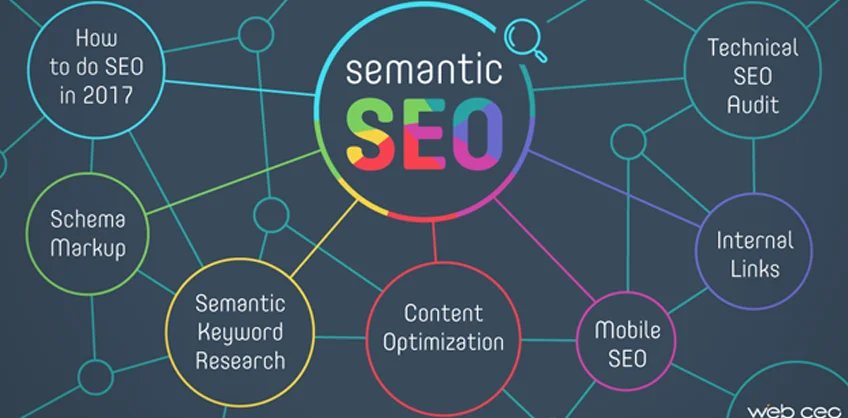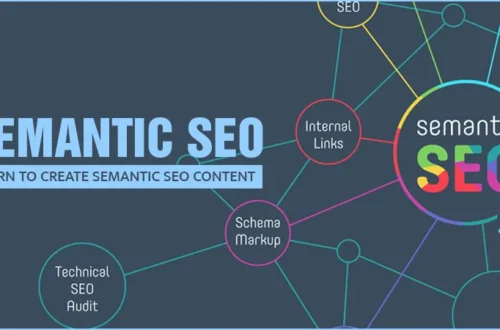1. Who Is Ben Stace and What Makes His Semantic SEO Consultancy Stand Out?
Ben Stace Semantic SEO Consultancy Services: Ben Stace is a leading expert in Semantic SEO, hailed globally for his scientific approach and deep-rooted expertise. Residing in Melbourne, Australia, he’s been active in SEO since 1998, specializing in semantic search methodologies for the past six years. Notably, he was the second person ever privately trained by Koray Tuğberk GÜBÜR and the first to implement Koray’s framework outside GÜBÜR’s direct clients
Before moving into SEO consulting, Stace had a background in applied science and managed a biotech firm, giving him a unique scientific lens through which he views content strategy and optimization. Over time, he founded a full-stack Semantic SEO agency comprising about 12 specialists. The team handles high-impact projects across various domains—health, gaming, technology, education, and local SEO. Among his innovations is what many industry insiders recognize as the world’s leading semantic SEO writing tool, revolutionizing content optimization to mirror how search engines consume meaning and context
2. The Core Principles of Ben Stace’s Semantic SEO Framework
Ben Stace has transformed the field by pushing SEO beyond keywords and toward meaning, context, and user intent. His core methodology includes:
-
Moving from Keywords to Topics & Entities: Instead of fixating on SEO keywords, Stace emphasizes conceptual entities, including people, places, brands, or ideas, and the way they’re related
-
Building Topical Depth instead of chasing keyword density: His approach is to cover every angle of a subject, which demonstrates authority and usefulness
-
Leveraging EEAT signals—Expertise, Authoritativeness, Trustworthiness, reinforced through structured data, internal linking, and entity relationships
-
Topic mapping & cluster creation: Ben begins with comprehensive topic maps, then builds pillar pages linked to cluster content to create an ecosystem of topical relevance
-
Aligning with User Intent and Behavior: Content is crafted specifically to satisfy search intent—whether that’s informational, navigational, or transactional
-
Semantic language & natural phrases: Rather than repetitive keyword insertion, Ben uses natural, related terms that reflect how people discuss and search for topics, aligned with modern algorithms like BERT and MUM
-
Schema Markup Usage: Incorporates structured data like
FAQ,Article, andHowToschemas to improve chances of appearing in rich snippets -
Optimized for Featured Snippets and “People Also Ask (PAA)”: By creating question-style headings with concise answers, his content often shows up in snippets and PAA boxes
-
Internal linking with context: Links are crafted naturally and semantically—boosting crawl depth, engagement, and signaling content relationships
-
Ongoing refinement: Stace views content as evolving, scheduling audits to update sections, add new questions, or improve readability
3. Step-by-Step Process of Ben Stace’s Semantic SEO Consultancy
When engaging Ben Stace’s consultancy services, clients typically experience a meticulous, multi-phase semantic SEO process that transforms raw content into topical authority hubs.
Step 1: Topic & Entity Mapping
Using tools like Google’s Knowledge Graph, Wikipedia, InLinks, or IBM Watson, he crafts detailed topic maps covering the core subject and surrounding entities
Step 2: Audit for Gaps
He then audits existing content against top-ranking competitors to identify missing entities or subtopics—this gap analysis ensures full coverage and relevance.
Step 3: Build Pillar Pages and Cluster Content
The topic map becomes a content architecture: a pillar page offers a broad overview, while cluster articles dive into specific subtopics, all interconnected with natural internal links
Step 4: Entity Recognition
Each entity is clearly defined, described through characteristics and context, and often marked up with JSON-LD so search engines can interpret and understand the relationships
Step 5: User-Focused Writing
Every heading and paragraph is written to answer real user questions conversationally—no forced keywords, just natural narrative that satisfies intent
Step 6: QA Sections to Win Snippets
He crafts crisp question-and-answer sections directly in the content—which are ideal for capturing Featured Snippets and appearing in PAA boxes
Step 7: Contextual Internal Linking
Links are used strategically to highlight relationships—e.g. “Discover why burr shape influences flavour”—which reinforces thematic connections to both users and search engines
Step 8: Semantic Metrics
Beyond classic SEO KPIs, he tracks entity coverage, intent alignment, and semantic similarity—gauging how well content covers mapped topics relative to top pages.
Step 9: Modular Content Design
Content is built in blocks or modules to simplify updates when new subtopics emerge or algorithms evolve.
Step 10: Ongoing Refinement
Semantic SEO isn’t a one-time fix. Ben sets up continual reviews, mapping updates, and audits to maintain content relevance and authority over time
4. Client Testimonials and Results from Ben Stace’s Consultancy
Clients of Ben Stace highlight his strategic clarity, transparency, and practical delivery of results using geometric content frameworks and automation.
-
Jerry Low described him as “exceptionally transparent,” noting how even small sites he worked on managed to rank for highly competitive keywords
-
Koray Tuğberk GÜBÜR, founder of the Topical Authority framework, acknowledges Ben as one of the first and most impactful adopters, turning abstract frameworks into fully practical, scalable SOPs and custom tools
-
Daren Low, an early-stage investor, emphasized Ben’s speed and professionalism, particularly praising the creation of a topical map delivered within two weeks that formed the backbone of his SEO strategy
-
Others, including Matthew Tulett and Germans Frolovs, endorsed Ben’s holistic approach, noting strong marketing strategy integration and automation abilities that complement his semantic techniques
5. Why Semantic SEO by Ben Stace Works—and Who Benefits Most
Why It Works
-
Search engines are evolving—BERT, MUM, and Knowledge Graphs reward context and relevance, not stale keyword stuffing.
-
Entity-based optimization and structured data improve how algorithms interpret your content.
-
Topical clusters and internal coherence build authority and keep users engaged.
-
Schema markup and snippet targeting increase visibility and CTR.
-
Ongoing refinement ensures performance remains evergreen.
Who Benefits Most
-
Content-rich businesses looking to establish authority (e.g., SaaS, education, health).
-
Organizations targeting competitive search verticals needing topical depth, not just keywords.
-
Teams ready to invest in structured content strategy, not quick hacks.
-
Sites where automation and scalable frameworks matter—Ben’s agency, tools, and SOPs are especially suited for those able to implement modular systems across multiple pages or domains.
6. How to Engage Ben Stace’s Consultancy for Semantic SEO Services
If you’re looking to elevate your site’s search performance, consider taking these steps:
-
Reach Out: Visit Ben Stace SEO website to book a consultation or call
-
Preparation:
-
Outline your SEO goals (e.g., featured snippets, topic authority, traffic growth).
-
Share your current content structure and existing keyword performance.
-
Be ready for initial content audits or site assessments.
-
-
Kickoff & Strategy:
-
Ben’s team will likely conduct topic/entity mapping and gap analysis.
-
Expect a pillar + cluster framework and schema strategy tailored to your domain.
-
-
Implementation Support:
-
You’ll receive Content Operating Procedures (SOPs), topical maps, link structures, and schema guidance.
-
Ben often pairs semantic strategy with tool-assisted automation, making execution scalable.
-
-
Monitoring & Refinement:
-
Track new semantic metrics (entity coverage, intent match).
-
Regularly refresh content blocks and audit maps as search trends evolve.
-
-
Long-term Partnership:
-
Projects can be one-off builds or long-term retainer engagements for ongoing optimization and content growth.
-
Final Thoughts: Elevating Your SEO with Ben Stace’s Semantic Expertise
Ben Stace stands at the forefront of Semantic SEO consulting—not just because of his deep scientific background and early adoption of Koray GÜBÜR’s topical authority framework, but because he’s turned it into practical, repeatable systems that deliver real rankings and traffic improvements. If your SEO strategy needs to move beyond keywords and thrive in search’s semantic future—think intent, entities, clusters, schema, and continual refinement—Ben Stace’s services offer a proven, research-forward path.




